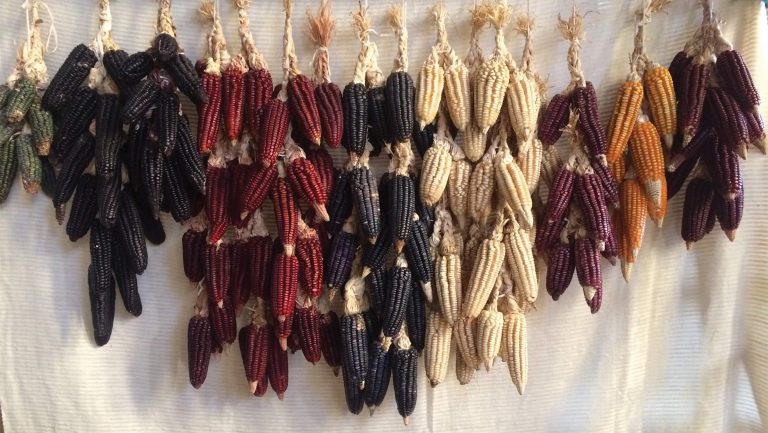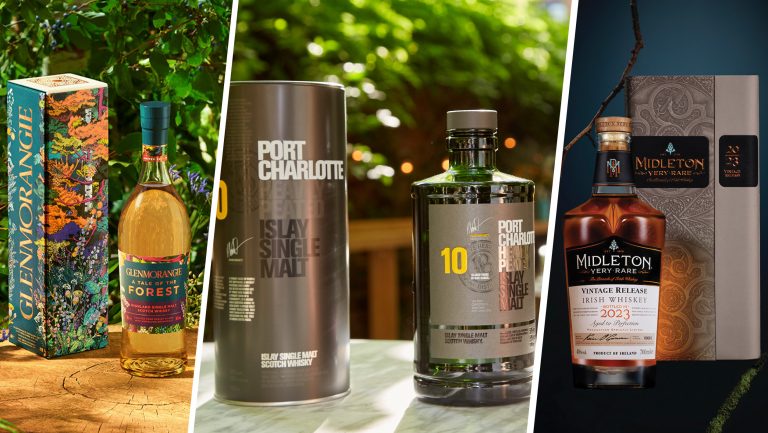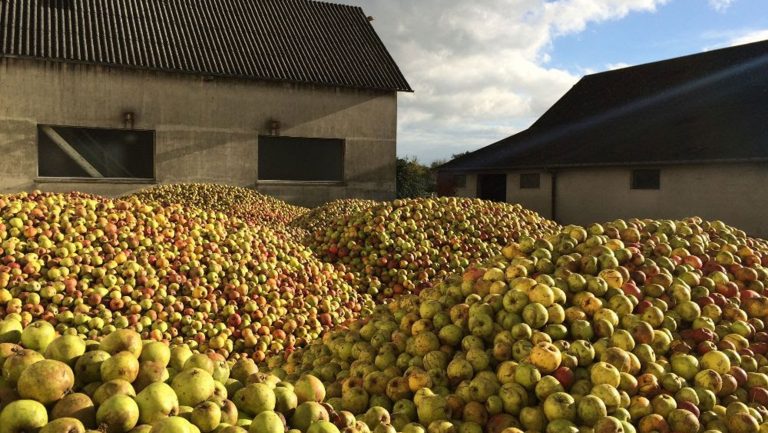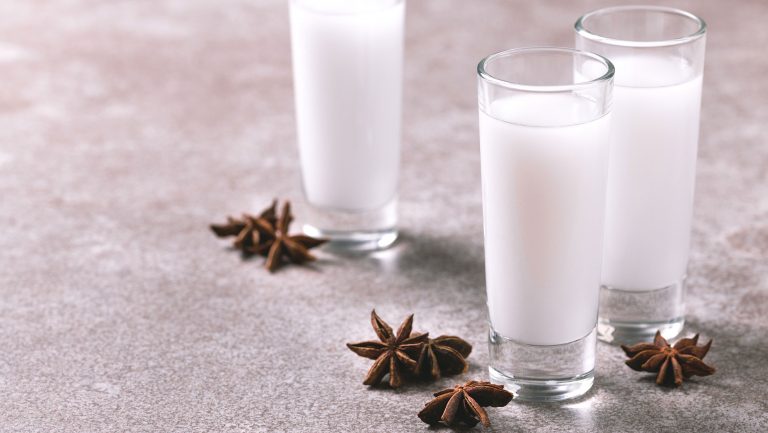Today, some of the most intriguing spirits coming out of Mexico are made from corn. Although Mexican spirits are synonymous with mezcal and its Jaliscan offshoot, tequila, it’s corn—not agave—that is Mexico’s ancestral grain, and it remains central to the country’s cultural identity.
Driven by longtime agave distillers with rich experience crafting artisanal mezcal, the young Mexican whiskey movement is focused on reviving near-extinct heritage corn varieties and the results are as varied as the heirloom corn varieties that grow across the country. In the birthplace of maize, the birth of this new category feels like destiny.
How Whiskey Could Save Mexico’s Indigenous Grain
“Corn has been the main diet for the majority of Mexicans for as long as 14,000 years. And it still is,” says Douglas French, distiller of Sierra Norte Whiskey. Mexican civilization and culture were built on corn. Indigenous peoples in and around Oaxaca not only hybridized corn varieties that span the color and size spectrum, but they also figured out how to unlock the nutritional bomb within each grain through nixtamalization, the technique of cooking dried corn in the chemicals present in ash.

Don’t miss the latest drinks industry news and insights. Sign up for our award-winning newsletters and get insider intel, resources, and trends delivered to your inbox every week.
In recent decades, corn—Mexico’s great agricultural gift to the world—has been facing an existential threat, due largely to the flood of industrial corn into Mexico post-NAFTA, as well as the greater commodification of agriculture globally, which has placed heirloom plants in peril. “This national treasure of national corn, created by the indigenous scientists of Mexico, was in danger of extinction,” says Jonathan Barbieri, founder of Pierde Almas mezcal and Maiz Nation, a new small-batch corn whiskey that’s due to hit the U.S. market in 2021.
Barbieri developed the idea for Maiz Nation after living in a tiny Mexican village of corn farmers for 12 years. He says, “I thought, ‘I’m a distiller, I know how to do this. What if I start buying corn from local farmers and paying fair prices?’”
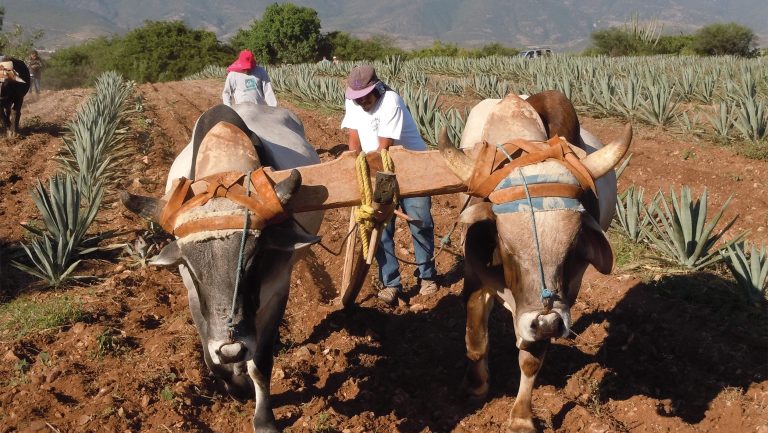
Leveraging Mezcal Expertise and Popularity
By bringing money, experience, and attention to Mexico’s ancient distilling traditions and ingredients, the past decade’s mezcal craze paved the way for this moment. Iván Saldaña trained as a chemist and worked in the tequila industry before he launched Montelobos Mezcal in 2011. He went on to experiment with other ingredients and created the chile liqueur Ancho Reyes, then sold both brands to Campari in 2019.
“After that experience, I became obsessed with doing more with the raw materials that are unique and important to Mexico,” Saldaña says. Corn was the obvious next ingredient in line.
As Saldaña recalls, “I explored everything from popcorn to multicolored corn from all over Mexico” before “falling in love with” cacahuazintle, a variety of corn grown in the mountains east of Mexico City (famously featured as the large kernels in pozole, the national stew). Hedescribes cacahuazintle as “floury, with lots of air in the grain, not so compact, less fat inside, lots of protein, and, of course, a lot of starch.”
While Saldaña was on a trip to Peru, he encountered the local malted corn beverage called jora, which is essentially a malted corn beer. He returned with the idea of blending the traditional Mexican process of nixtamalization with that malting process. The resulting whiskey is made with some malted and some nixtamalized corn. After years of experimenting, Saldaña launched Abasolo Whisky in the spring of 2020. He also created Nixta Licor, based on an ancestral corn liqueur from Jilotepec.
“Bartenders love Abasolo because it has that sense of nostalgia from drinking atole or eating pinole [common Mexican street food, atole is a cinnamon-spiced masa drink and pinole is a biscuit made of cornmeal and spices],” says Abasolo’s brand manager, Cesar Sandoval, as well as for the way it works in cocktails. “The vibrant corn flavor of cacahuazintle really shines in Abasolo, because there is minimal oak aging, so it’s ideal mixed with coffee and in tiki drinks. It’s even replacing agave spirits, in corn margaritas, for example,” he adds.
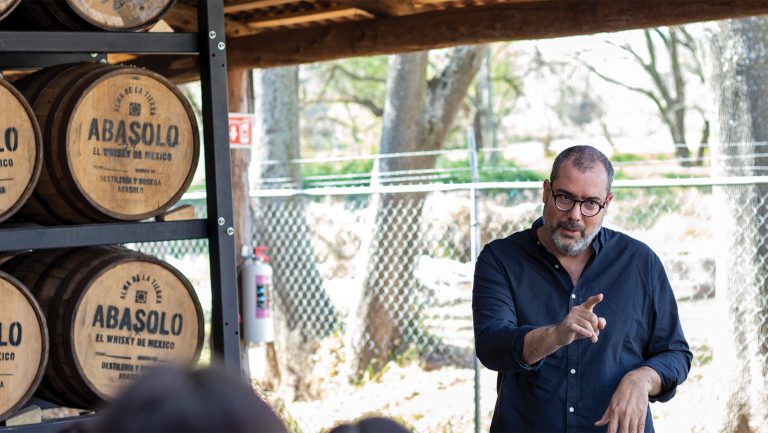
A Deliciously Sustainable Raw Material
Douglas French’s journey to Mexican whiskey was also through mezcal. An American transplant, French launched Scorpion Mezcal in Oaxaca 25 years ago. In 2013, the price of agave shot up in Jalisco, so tequila producers started buying up Oaxaca’s supply, which left precious little for local distillers. French didn’t want his stills to sit empty, so he turned to corn.
“I was going to remote farms and markets scoping out the supply of corn. I’m an old hippie, so I wanted to make the most natural whiskey that would taste great. I was fascinated to find red, purple, even green corn, and I distilled them in separate batches,” French recalls.
Gradually, as French has established relationships with various farmers, he’s been helping to bring back many heirloom varieties, particularly the red corn and the purple corn. Sierra Norte produces three whiskeys, each a different color of corn, and every batch is different. “We’re not trying to make a uniform product. We’re trying to make a delicious product,” he explains.
Corn is a sustainable crop—an advantage that explains why it’s nourished the Mexican people for thousands of years. It produces crops once or more per year, so it grows without the incredible investment of time and risk a crop such as agave has. Sandoval has found this resonates with bartenders. “Bartenders are keen to understand how we fit into the sustainability spectrum,” Sandoval says. “They value that we work directly with farmers and we respect the raw material.” Distillers such as Abasolo, Sierra Norte, and Maiz Nation are not only reviving near-extinct varieties of corn, but they’re saving local jobs and the culture that surrounds them.

A Different Style of Corn Whiskey
Mexican corn whiskey distillers are aiming for a corn-forward profile. Marsilio Gabuardi, former bar manager of San Francisco’s Cala and a soon-to-open restaurant in Guadalajara, describes Mexico’s corn whiskeys as “totally different” than the more well-known corn whiskey, American bourbon. “The corn flavor is much more persistent.”
With a lighter oak profile—and without bourbon’s signature butterscotch and toasted caramel notes—Mexican whiskeys are also lighter in body. “A lot of whiskey drinkers are surprised by them because they are so light and fresh,” says Camille Austin, director of advocacy for Abasolo’s parent company, Casa Lumbre Spirits.
Interest in Mexico’s heritage corn is spreading, which has increased the momentum to save many varieties. For years, California-based distiller Rob Easter has been producing Workhorse Rye with a focus on micro-batch, heritage-ingredient-driven projects. For his Modern Ancient Grains Project, designed to highlight and promote agricultural diversity, Easter is crafting Bolita Belatove Oaxacan Pink Corn Whiskey. The U.S. culinary community has also joined the mission to save Mexican corn, which has led to a resurgence of raw materials. Los Angeles-based supplier Masienda sells masa and whole-kernel corns from across the color spectrum sourced from Oaxaca.
Although Mexico’s corn whiskey industry is young, it’s already producing impressive results: expressions that are unique, authentic, and terroir-driven in a way that only a corn spirit crafted in its native land could be. Perhaps corn is like Mexico’s prodigal son who had to leave the country and become something well-known and widespread in bourbon before returning home to reclaim its true Mexican identity.

Dispatch
Sign up for our award-winning newsletter
Don’t miss the latest drinks industry news and insights—delivered to your inbox every week.
Max Garrone writes about wine, beer, and spirits and the cultures that create them. He cofounded Mezcalistas, where he is a contributing writer and continues to focus on the world of agave spirits.

